

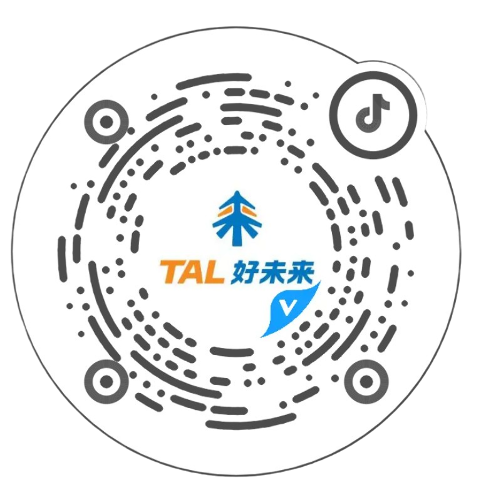


On August 24th, during the live event celebrating the 20th anniversary of Tomorrow Advancing Life (TAL), CTO Mi Tian announced the internal testing of MathGPT, a self-developed trillion-level large modelin the field of mathematics.
In May of this year, TAL announced the development of a self-developed large mathematical model named MathGPT. MathGPT is a large model in the field of mathematics, focusing on problem-solving and teaching algorithms and oriented towards global math enthusiasts and scientific research institutions. It is also the first large model dedicated to mathematics in China.
When users use MathGPT, they can upload math problems in text or image formats and receive interactive feedback, or they can randomly generate math problems and receive answers from the system using the "Random Problem" button. Currently, MathGPT supports both Chinese and English versions on PC and mobile platforms.
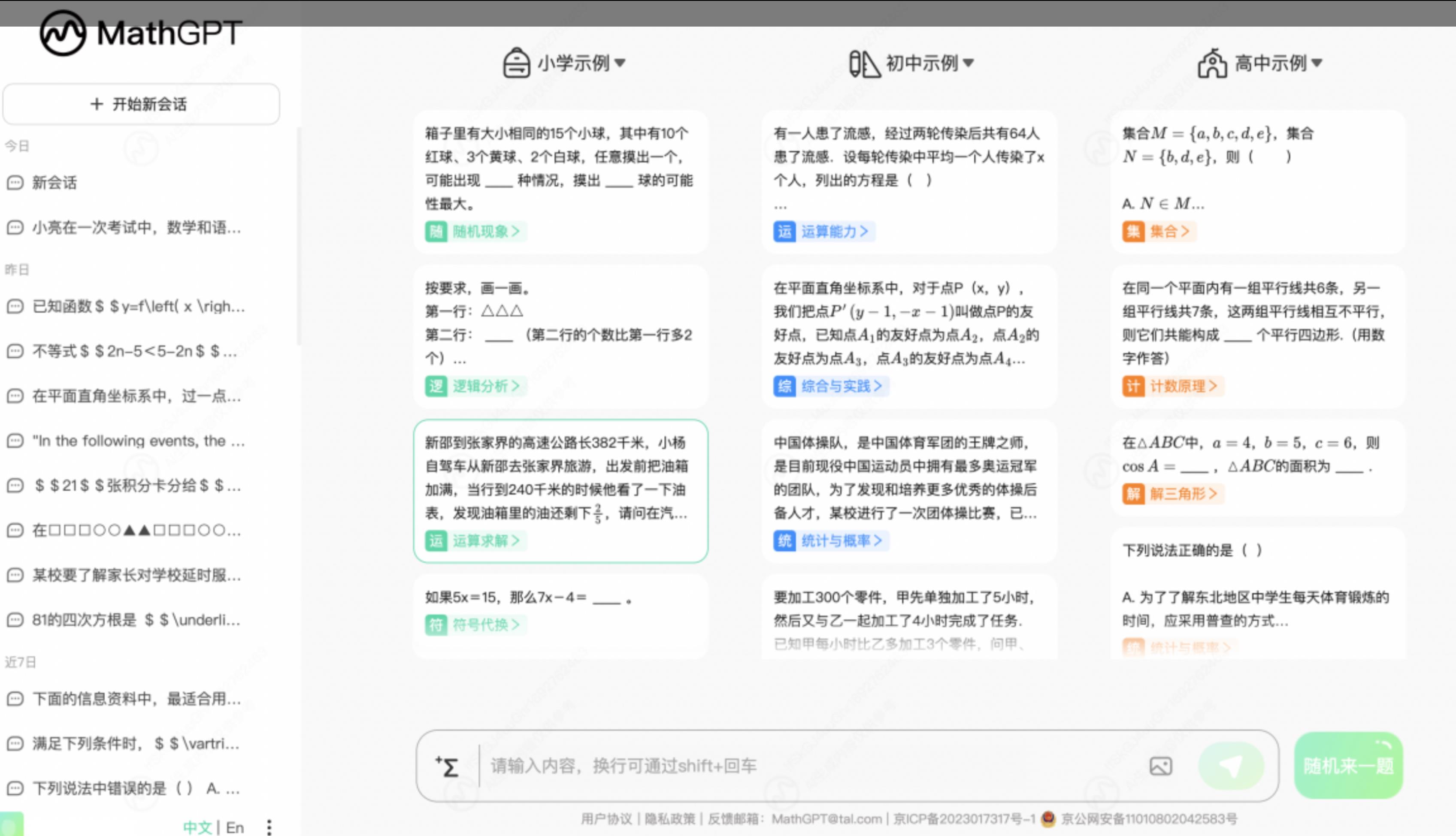
Leading mathematical problem-solving capability
Tian Mi introduced that MathGPT integrates years of educational research and development data of TAL, focusing on the field of mathematics. The trillion-level large model's training, reasoning, and deployment framework has endowed the model with powerful capabilities. Through high-quality educational data, it continuously trains and fine-tunes multiple tasks such as problem calculation, explanation, and Q&A, presenting outstanding performance. In addition, with the help of human feedback alignment, the model's overall capabilities will be further improved. MathGPT has significant advantages in terms of accuracy, stability, and user experience.
The MathGPT official website shows that its mathematical computing ability already covers math problems from primary, middle, and high schools, covering various types such as computational, application, and algebra problems. It also allows for follow-up questioning based on the problem and has not yet opened Q&A interactions outside of mathematics.
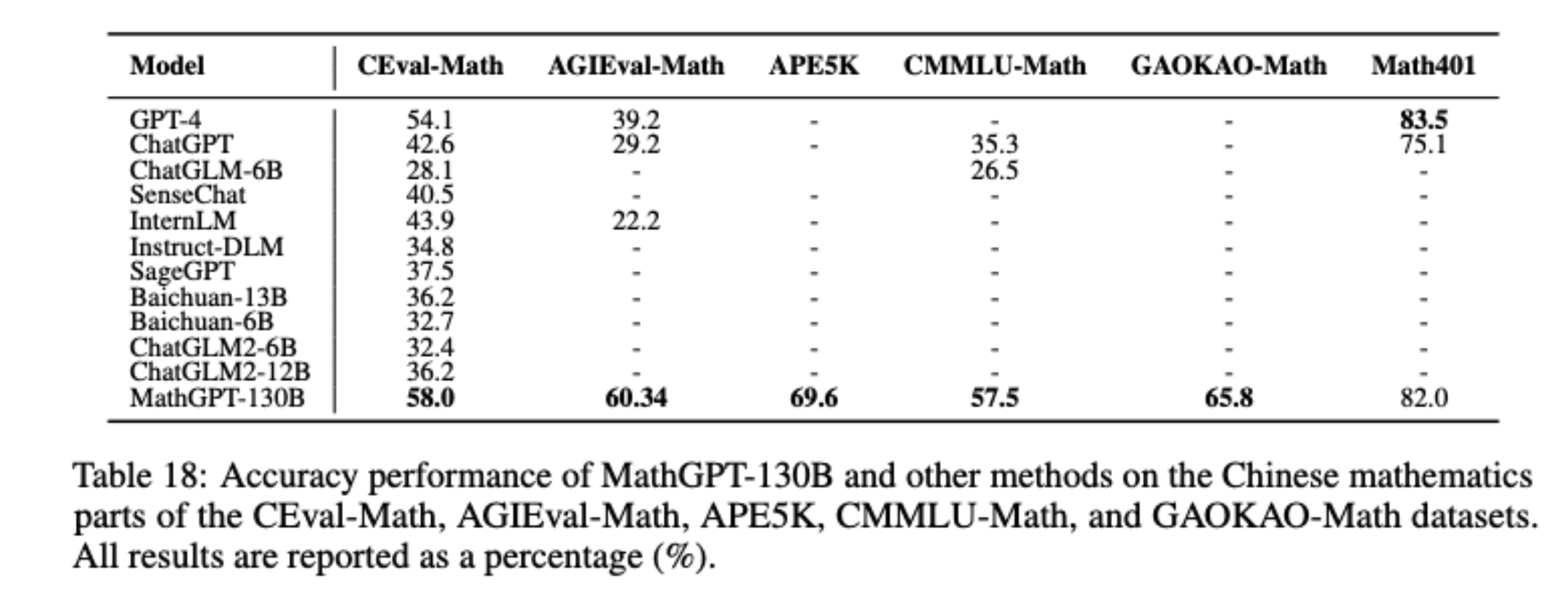 MathGPT Technical Report
MathGPT Technical Report
The MathGPT technical report shows that in six public mathematical evaluation sets such as CEval-Math, AGIEval-Math, APE5K, CMMLU-Math, the Gaokao mathematics examination, and Math401, TAL's MathGPT has achieved the highest scores in multiple tests. Additionally, MathGPT also performed well on the comprehensive test sets for junior and senior high school in the C-Eval system.
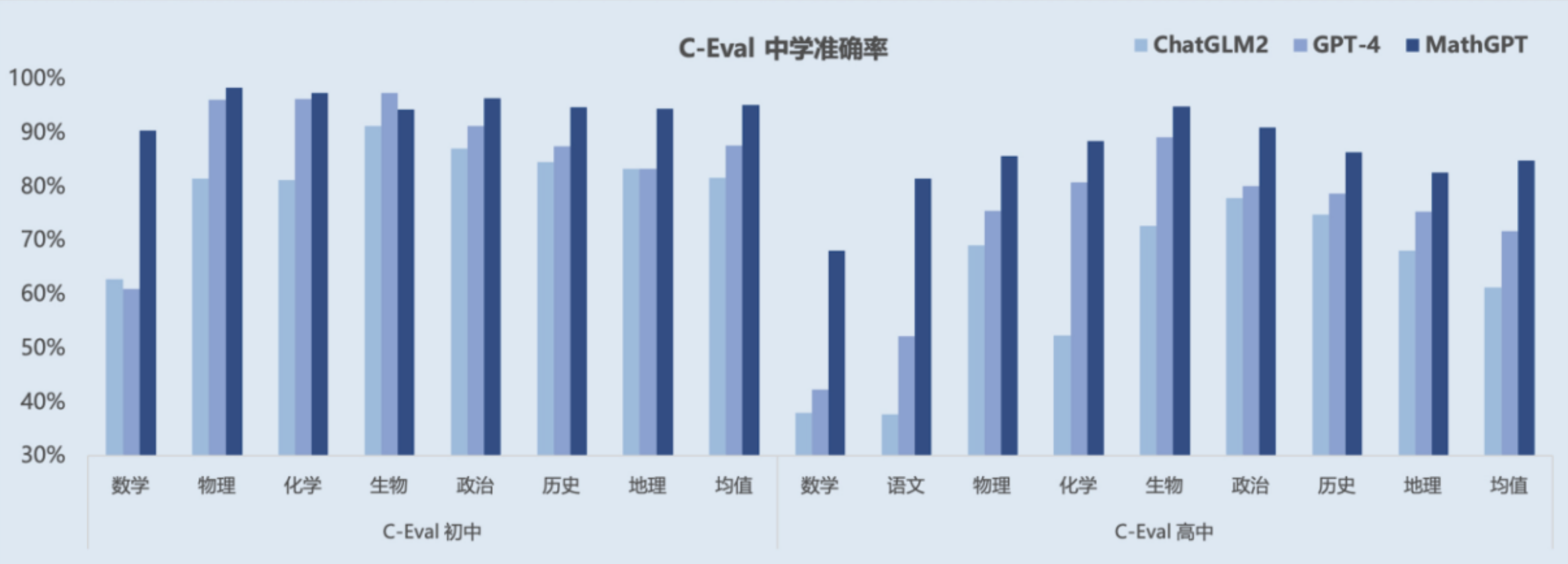
MathGPT's Performance in Middle and High School Subjects on the C-Eval Leaderboard
Regarding stability in problem-solving, the large model has been trained using extensive data from expert mathematicians, resulting in professional and clear problem-solving steps.
For example, for a sequence problem, MathGPT provides answers in three parts: "Analysis," "Detailed Explanation," and "Key Points." This approach offers a more detailed solution than the general large models, providing a problem-solving method, calculations, and answers in detail, and highlighting the key points for further understanding of the problem's intent.
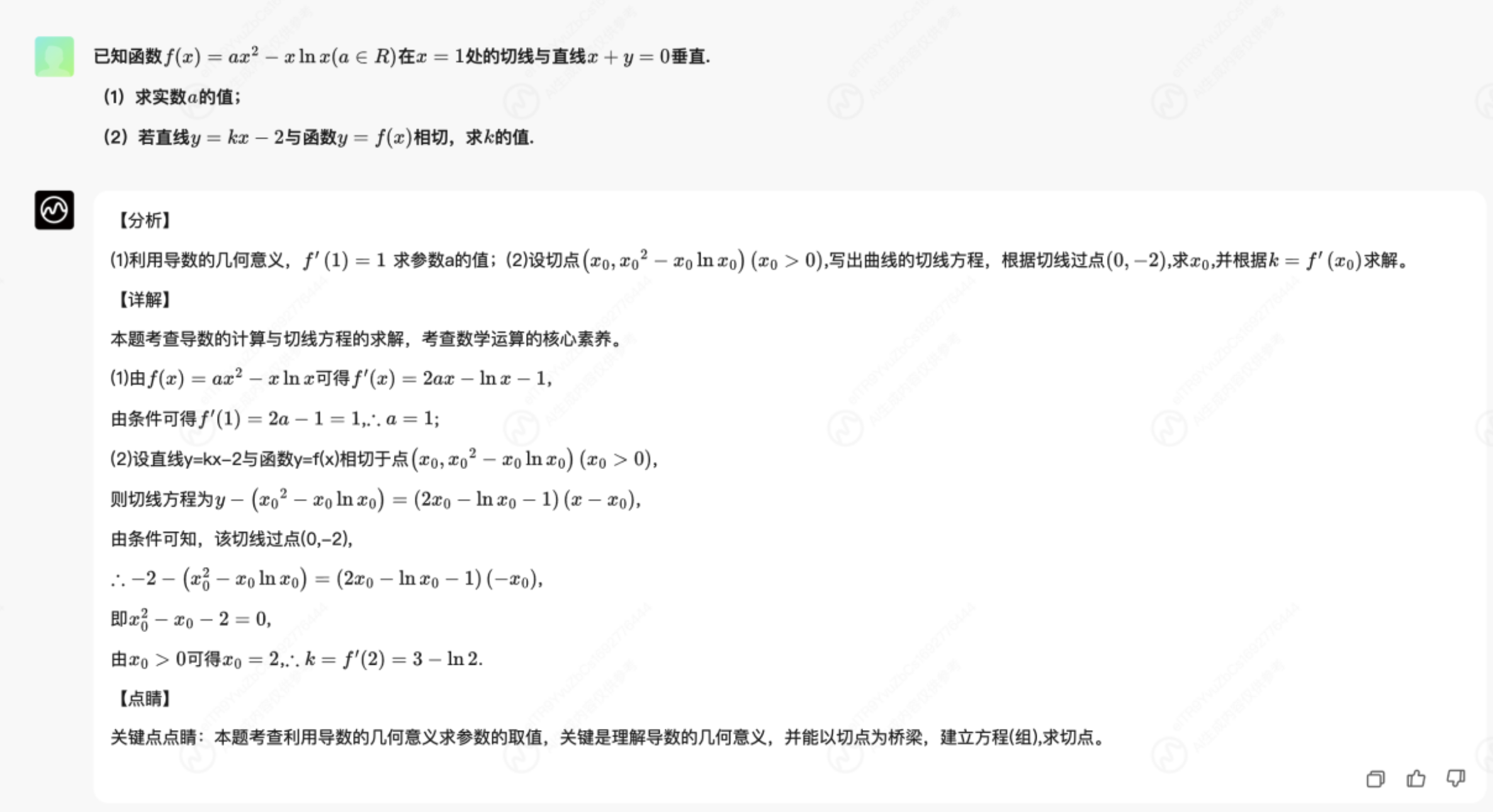
For users, the essence of studying mathematical problems lies not only in obtaining the answers themselves but also in understanding the underlying principles and logical reasoning behind them. Compared to other general large models, MathGPT can achieve a higher accuracy in problem-solving, provide clearer explanations, and better meet the core needs of users to solve mathematical problems using AI products.
With the release of MathGPT, TAL has also updated its official website with a representative and challenging mathematical task evaluation set for global artificial intelligence experts and math enthusiasts to experience and evaluate. TianMi said: "We hope that MathGPT will play a greater role in the field of mathematics education. TAL is willing to share its experience, methods, and industry insights in developing large-scale, high-quality content with the industry to progress together."
TAL's AI Achievements
With the rise of AI, many technology companies have announced the launch of large-scale language model products this year, while TAL has chosen a different direction. It did not use existing large language models for fine-tuning or interface calls, nor did it develop a general large language model. Instead, they deeply researched and developed large models in the vertical field of mathematics, aiming to create independent, stable, sustainable, and high-quality mathematical solutions.
While general large models may excel in language-focused tasks, they have clear drawbacks in solving, explaining, answering, and recommending mathematical problems. Furthermore, in the broader context of achieving general artificial intelligence, mathematical reasoning capability is crucial, and many large companies worldwide are researching in this area.
"TAL has accumulated 20 years of data and business in mathematics, including extensive educational data and the ability to continuously produce educational data. Therefore, we chose to do this challenging but correct thing," sai Tian Mi. TAL aims to use its extensive experience in mathematics and AI to lay the groundwork for AI in the era of large models.
In 2017, TAL established the AI Lab. With the help of the Open Innovation Platform for Smart Education AI, the AI Lab of TAL has won 16 championships and 6 runner-ups in various top academic conferences and competitions and published nearly 100 high-level academic papers in international journals and conferences.
In 2019, the Ministry of Science and Technology announced that it would be entrusted with building a Smart Education National New Generation AI Open Innovation Platform based on TAL, making it the only member of the "national team" of artificial intelligence in the education industry and conducting in-depth research in the field of artificial intelligence for many years. Over the years, based on the significant demand in the education industry, TAL has built a national educational technology innovation platform that provides AI algorithm capabilities, application solutions, basic hardware and software systems, and open-source services for education.
TAL is also actively involved in promoting the establishment of a large model standard system. It has participated as a core unit in the formulation of the National Standards for Large Models organized by the National Artificial Intelligence Standardization Overall Group, the formulation of the Group Standards for "Pre-training Model Technology and Application Assessment Methods for Large Models" led by the China Academy of Information and Communications Technology (CAICT), and the Education General Large Models" series of standards drafting work organized by the Ministry of Education Education Informatization Technology Standardization Committee and the National Information Technology Standardization Technical Committee.
Recently, TAL is leading the preparation of educational large model group standards with leading industry research institutions, universities, and companies such as CAICT, Fudan University, iFlyTek, and Baidu, to comprehensively evaluate the capabilities of educational large models from the perspectives of coverage, application effectiveness, and service reliability.
Using AI to Achieve Large-Scale Differentiated Instruction
With the rise of large language models, how to use AI technology to serve various industries has become a focus of society. The education industry is one of the earliest industries to explore the AI field, and how AI can bring about changes in the education ecosystem has always been a subject of attention.
Tian Mi pointed out that AI has brought an opportunity to redefine the education industry, and large model technology has made large-scale differentiated instruction a real possibility. Over the past 20 years, TAL has been exploring personalized learning, from small offline classes to large online classes, and now to AI courses. The form has continuously evolved, but the content taught has always been fixed, with limited interaction between students and teachers and the granularity only reached the question level.
Tian Mi believes that the essence of large models is a more efficient way of learning knowledge from data and applying it. With the support of AI capabilities, the new learning method of "student self-study + AI Q&A" has become widely possible. Students can have access to high-quality teaching content at lower thresholds and costs, while the personalization and refinement of teaching content continue to increase. This scenario enables AI teaching and Q&A assistance tailored to each student's needs, achieving personalized learning for every student.
Based on MathGPT, TAL will continue to explore new learning methods in an AI environment to better serve learners and math enthusiasts worldwide. Experience and insights will be shared with the industry in a timely manner to facilitate positive changes in education technology through AI.
According to Tian Mi, with the smooth progress of internal testing, the problem-solving ability of MathGPT will continue to improve, and product-level applications based on MathGPT are being accelerated in research and development and will be released soon.
This article was reprinted from: Xinhua News Agency APP https://h.xinhuaxmt.com/vh512/share/11650604?d=134b2a8